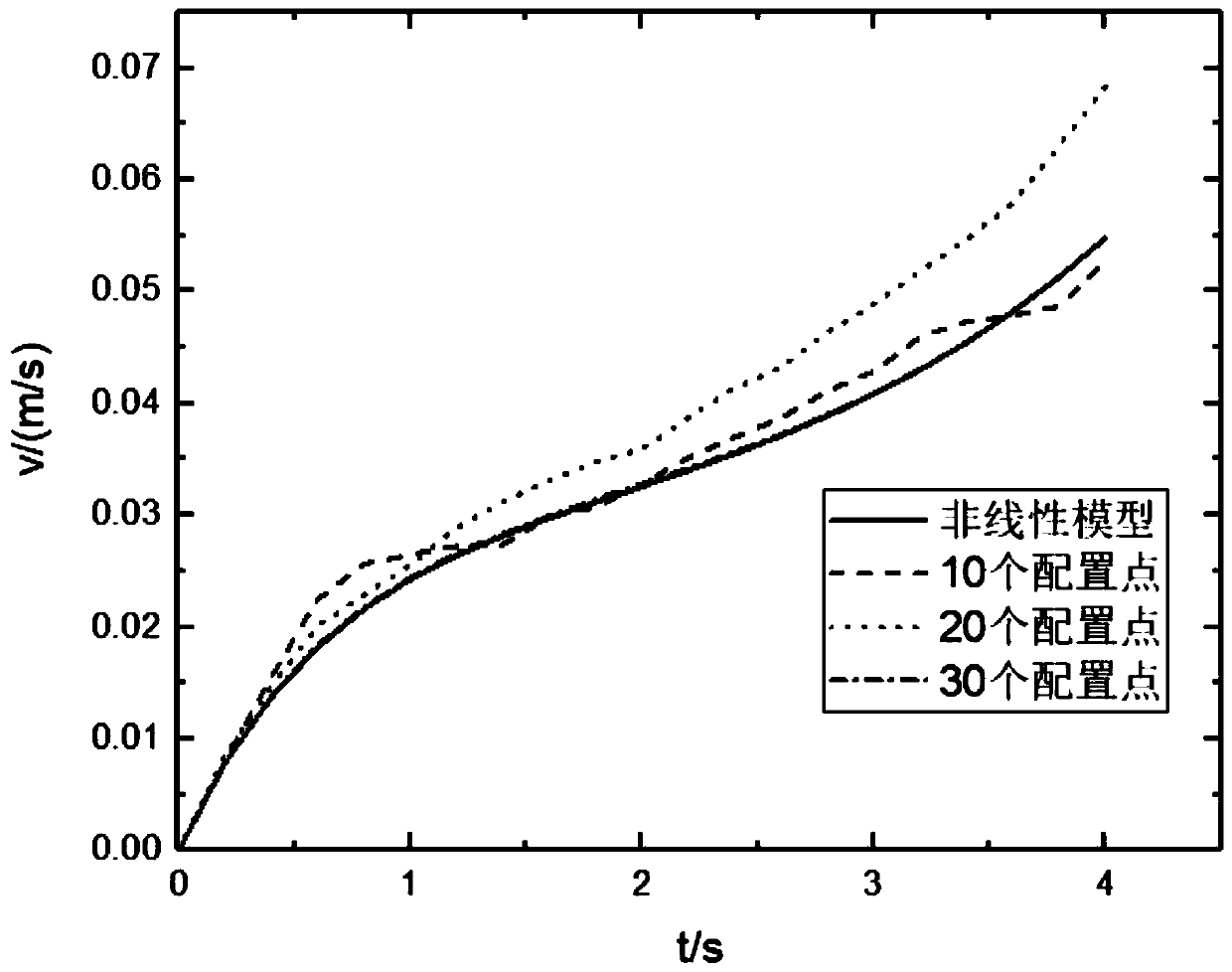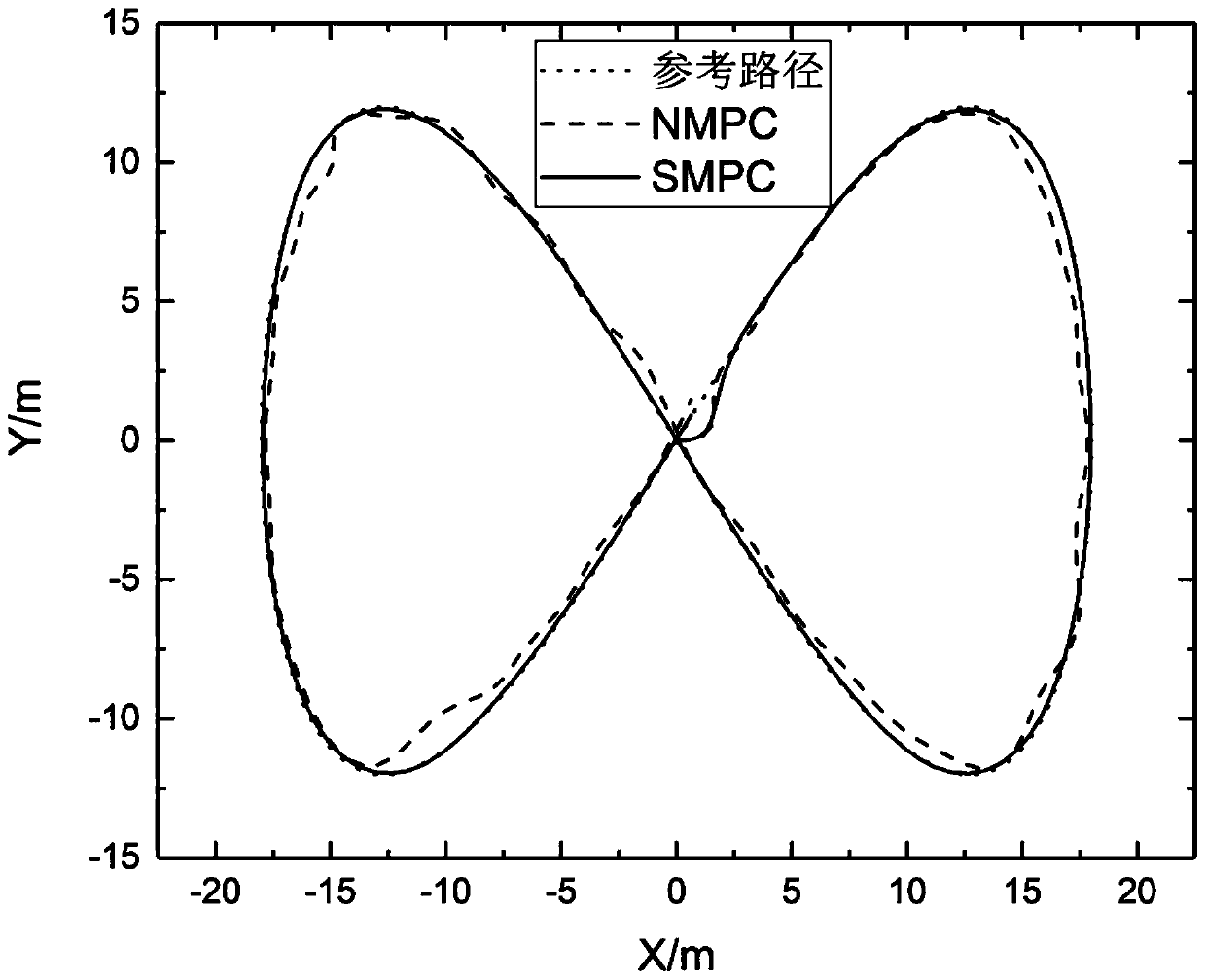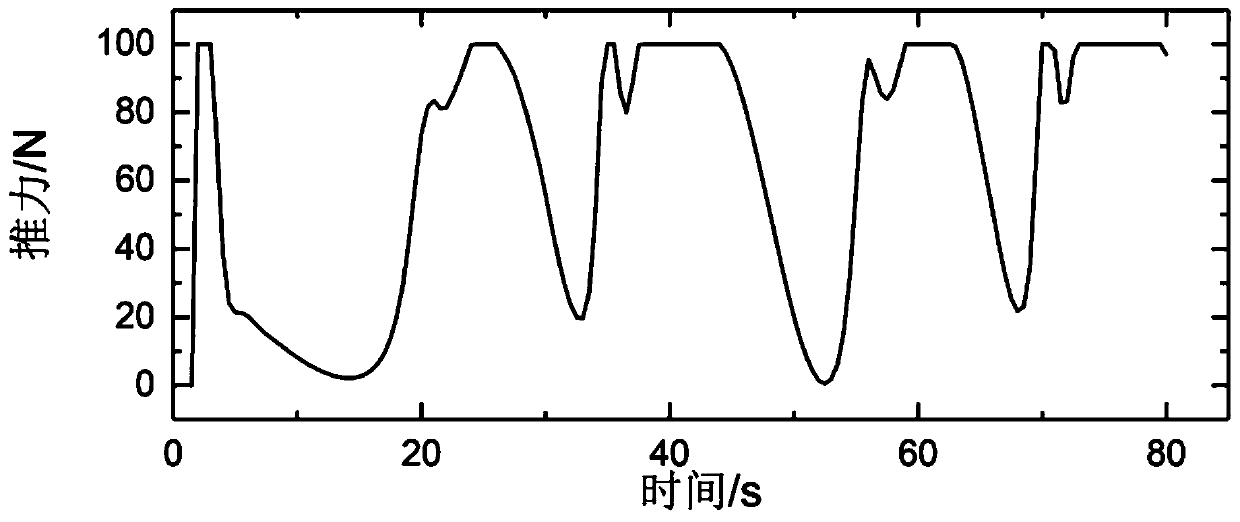Stochastic model predictive control technology-based autonomous underwater vehicle path tracking method
An underwater robot, predictive control technology, applied in the direction of height or depth control, can solve the problems of AUV path tracking error, parameter perturbation and other problems
- Summary
- Abstract
- Description
- Claims
- Application Information
AI Technical Summary
Problems solved by technology
Method used
Image
Examples
specific Embodiment approach 1
[0018] Specific implementation mode one: the specific process of the autonomous underwater robot path tracking method based on stochastic model predictive control technology in this implementation mode is as follows:
[0019] Step 1. Measure the state measurement value of the AUV at the initial moment, set the expected path p(σ) of the AUV; set the probability distribution function f of the uncertain parameters in the AUV model θ , the basis function of the polynomial expansion and the initial value of the control input sequence (moment and force of the control AUV);
[0020] Step 2, measuring the state measurement value of the current AUV, and obtaining the path tracking error of the AUV according to the state measurement value of the current AUV and the expected path p(σ) of the AUV;
[0021] Step 3. Make the path tracking error e obtained in step 2 p (t) Convergence, the control input of the AUV is obtained, and the control input of the AUV includes the torque and force of...
specific Embodiment approach 2
[0023] Specific embodiment two: the difference between this embodiment and specific embodiment one is that the state measurement value of the current AUV is measured in the second step, and the path of the AUV is obtained according to the current state measurement value of the AUV and the expected path p(σ) of the AUV Tracking error; the specific process is:
[0024] Set the mathematical model of AUV horizontal plane motion:
[0025]
[0026] where η=[x′ y ψ] T are the coordinates and attitude angle in the geodetic coordinate system, x′, y are the position of the AUV in the geodetic coordinate system, ψ is the heading of the AUV in the geodetic coordinate system, and the superscript T means transpose, is the relationship between the earth coordinate system and the satellite coordinate system, R(ψ) is the horizontal plane coordinate transformation matrix; M=M RB +M A is the inertia matrix; M RB is the rigid body inertial matrix, M A is the additional mass matrix, v=[...
specific Embodiment approach 3
[0049] Embodiment 3: The difference between this embodiment and Embodiment 1 or 2 is that the path tracking error e obtained in Step 2 in Step 3 is p (t) Convergence, the control input of the AUV is obtained, and the control input of the AUV includes the torque and force of the AUV; the specific process is:
[0050] Suppose the AUV state quantity (coordinates and attitude angle η=[x′ y ψ] in the earth coordinate system of AUV T And the velocity vector v=[u′ v′ r] in the satellite coordinate system T ) is measurable, the tracking problem under the random MPC framework is described as follows:
[0051]
[0052] where J is the performance function, u N =[u 0 , u 1 ,...,u k ,...,u N-1 ] is the control input sequence in the prediction time domain, u k is the control input, x k is the state quantity calculated according to formula (1), x(k) is the measured value of the AUV state quantity at time k, θ is a random parameter, h( ) is the state constraint, U is the input quan...
PUM
 Login to View More
Login to View More Abstract
Description
Claims
Application Information
 Login to View More
Login to View More - R&D
- Intellectual Property
- Life Sciences
- Materials
- Tech Scout
- Unparalleled Data Quality
- Higher Quality Content
- 60% Fewer Hallucinations
Browse by: Latest US Patents, China's latest patents, Technical Efficacy Thesaurus, Application Domain, Technology Topic, Popular Technical Reports.
© 2025 PatSnap. All rights reserved.Legal|Privacy policy|Modern Slavery Act Transparency Statement|Sitemap|About US| Contact US: help@patsnap.com



